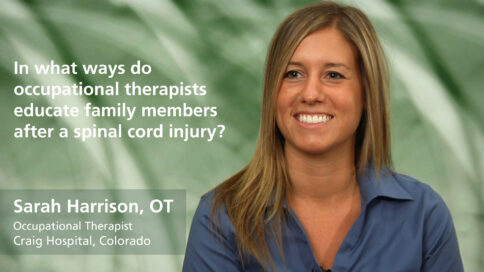What is “autonomic dysreflexia?” - Lawrence Vogel, MD
|
|
What is “autonomic dysreflexia?” |
|
Lawrence Vogel, MDMedical Director, Spinal Cord Injury Program, Shriners Hospital for Children, Chicago |
||
| Read Bio | More Videos by Lawrence Vogel | |
|
Share |
||
Transcript
It's an abnormal response to pain in an individual who doesn't necessarily feel pain. The causes of autonomic dysreflexia are a variety—the most common thing, is the bladder, typically distended bladder, but sometimes when an individual has a urinary tract infection. Or they may have a bladder stone, any abnormality of the skin including a burn, an irritation, infection or an ingrown toe nail. As a result, children with autonomic dysreflexia will not only have hypertension, but because their brain can't control what's below the injury, they end up having a, kind of a pounding headache, they may have flushing of their face, they may have sweating, and they may just feel horrible. And because it's hypertension, it can be life-threatening and people can have strokes. So it's critical to try to prevent it by good bowel and bladder control, and skin care, and if someone has it, autonomic dysreflexia, it's extremely important that people react to it appropriately.
Show Less|
|
||
add
What is “autonomic dysreflexia?” |
||
Lawrence Vogel, MDMedical Director, Spinal Cord Injury Program, Shriners Hospital for Children, Chicago |
More Videos by Lawrence Vogel | |
| Transcriptadd | share | |
It's an abnormal response to pain in an individual who doesn't necessarily feel pain. The causes of autonomic dysreflexia are a variety—the most common thing, is the bladder, typically distended bladder, but sometimes when an individual has a urinary tract infection. Or they may have a bladder stone, any abnormality of the skin including a burn, an irritation, infection or an ingrown toe nail. As a result, children with autonomic dysreflexia will not only have hypertension, but because their brain can't control what's below the injury, they end up having a, kind of a pounding headache, they may have flushing of their face, they may have sweating, and they may just feel horrible. And because it's hypertension, it can be life-threatening and people can have strokes. So it's critical to try to prevent it by good bowel and bladder control, and skin care, and if someone has it, autonomic dysreflexia, it's extremely important that people react to it appropriately.



